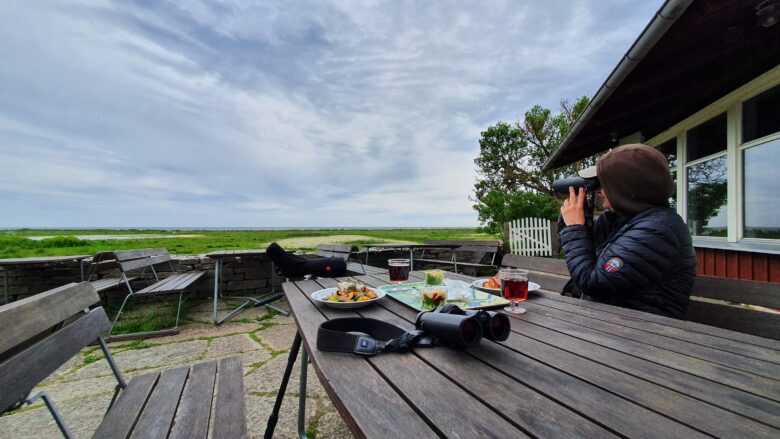This post is also available in: Dansk
Southern Öland
Bird Alarm set to Öland profile and Ölandskådarne activated on Band (a community app) and the birder bus Cama Coche loaded with “godis” we were ready to do birdwatching in southern Öland.
Although it has become a kind of a tradition with a trip to the long narrow Swedish island during Pentecost, four years have gone by since our recent trip to Öland in 2018. A journey to South and Central America and a two-year corona pandemic came across before we could again visit the island of the Sun and the winds.
Öland er Sveriges anden største ø, og dermed er en forlænget weekend ikke nok til at nå hele øen rundt. Vi koncentrerer os derfor primært om den sydlige del af øen. Det vil sige den del der ligge syd for en linje mellem Färjestaden og Stenåsa og hele vejen til Ottenby Södra Udde.
Ottenby Lund is the place if you want to see and hear Orioles, various warblers, and flycatchers. And then, of course, Södra Udde itself with the bird observatory and the lighthouse called Lange Jan. This is where you experience the bird migration in spring and autumn. Along the coast and in the meadows many birds rest during their migration. Finally, Södra Udde and the rest area at Södra Lund are also where you meet the other birders as most, sooner or later will pass by for a walk.
Well, we really like southern Öland and the many good birding sites, but there are many other options throughout Öland. This also applies if you are interested in botany, geology, and ancient monuments. A good website to find inspiration is Alt på Öland, where you can find information about 1519 different locations !!
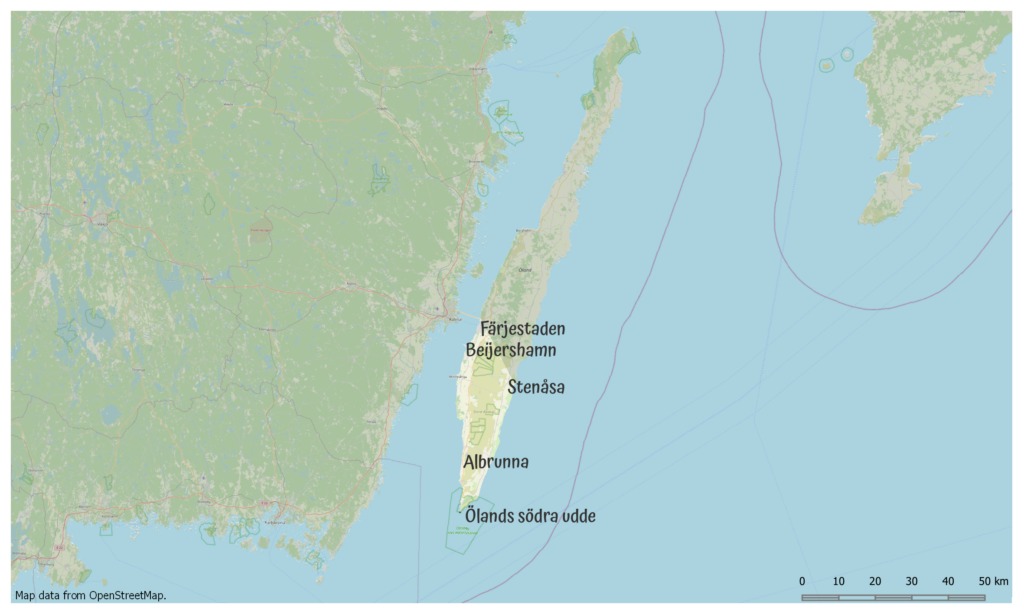
Lunch with phalaropes
One of our Öland traditions is to have lunch at Restaurant Fågel Blå, and this year was no exception. The restaurant is located next to Naturrum Ottenby and the lighthouse Långe Jan.
The weather was good so of course, we chose to eat outdoor – at the backside of Fågel Blå where you can watch birds at the same time. In the small pond, there was nothing but a single Mute Swan and a few Gadwalls. This meant that we could undisturbed enjoy the fried marinated herring, skimmed butter, and mashed potatoes quietly and calmly.
But we were “disturbed”. Not because a group of British birdwatchers turned up and more or less blocked our view. It was because their Swedish guide spotted two Red-necked Phalaropes foraging in the pond. What the heck! From where did they turn up? The two phalaropes had – literally – come out of the blue for a short pit stop during their northbound migration. They foraged very actively, and after a few minutes, they disappeared just as suddenly as they appeared. We had almost missed out on the two birds!
A few days later the lunch at Fågel Blås tempted us again. This time Bente ordered Fågel Blå´s lufsa with Swedish fried pork and raw lingonberries and I chose Hjortfärsbiff with roasted vegetables and chanterelle sauce. Again we placed ourselves at the back of the restaurant.
As the first thing, Bente checked the small pond and found that today there were three Red-necked Phalaropes present. Quickly I shot a couple of docu videos and we had good views through the spotting scope. Like the other day, the birds suddenly took off and disappeared. Luckily there were some birders who, from inside the restaurant noticed our behavior and managed to see the three phalaropes. Later that day we saw two more Red-necked Phalaropes – this time in the dam north of the bird observatory.
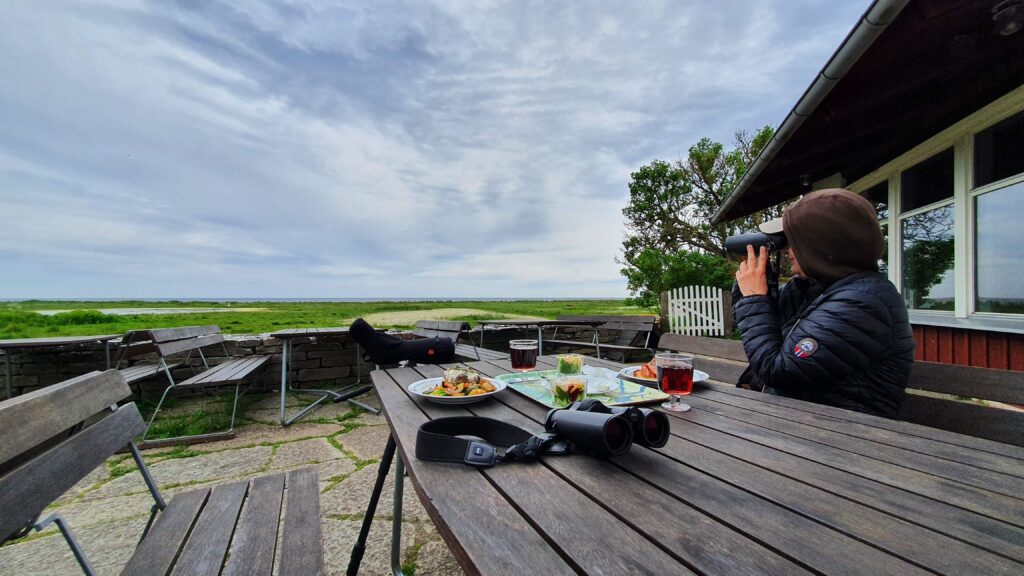
White-winged Black Tern in the limestone quarry
Saturday morning we were in Ottenby Lund and had just talked with two Swedish skådare (Swedish for birdwatchers) about the two singing Orioles were both “green” – i.e. young males. We had seen one of the birds and it was a nice yellow one, so at least one was an adult male. The two Swedes continued on their way further when one of them received a mobile phone call. After a short conversation, they turned around walking at a brisk pace towards the parking lot. As they passed again one of them said: “White-winged Black Tern at Albrunna limestone quarry”!
The White-winged Black Tern is an incredibly beautiful bird that both of us have seen in Denmark. And we had not long ago just passed the quarry on the way to Ottenby, so the question was: should we “go for it” or wait until later and hope it stayed? We were cool and decided to go for it later – if it was still around.
We were not the only birders – some more panicked than others – who at two o’clock in the afternoon were crossing the northwestern corner of Albrunna Alvar towards the quarry. Arriving at Stora Kalkbrottssjön, we were greeted by already present birders with the message that the tern had not been set for a quarter of an hour! But was it gone or was it still around somewhere? The quarry covers a reasonably large area…
Along with some others, we went further east to have a better overview of the eastern part. A Swedish woman found the terne sitting alone far out, and we quickly “got it” in the scope. It was at a long distance and thus not the best sighting. Luckily the tern took off and flew in our direction and it began flying around foraging in front of our position. Yes! – a new bird species to our Sweden list.
The next day we were back at the quarry. This time because of a Penduline Tit, which unfortunately was not cooperative.
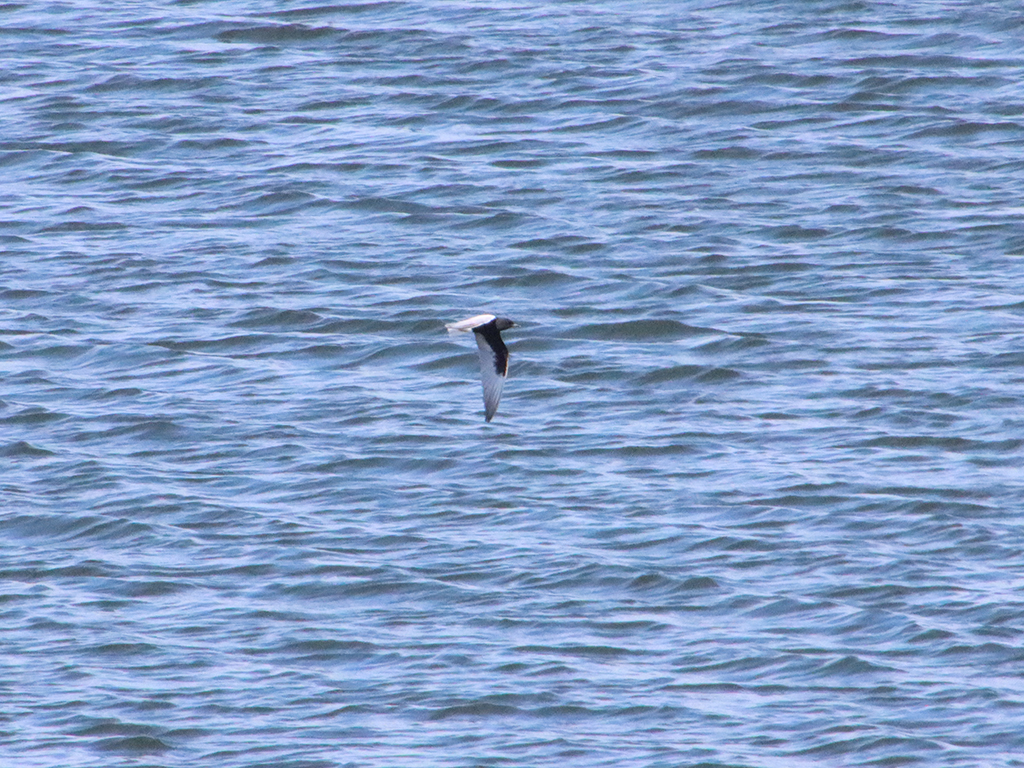

The article continues below this Advertisement
A failed harbour project – a good bird site
Together with Ottenby, Beijerhamn is one of Öland’s best bird sites. It is actually the result of a failed harbour project. In the 1850s, a large port was to be established to compete with Färjestaden. But the operation was stopped when a design error meant that the deposits which over time made it impossible for larger ships to call at the harbour. Over time, the area developed into a mosaic of salt marshes, reedbeds, and open areas for the benefit of bird life. Today, most of the area is designated as a nature reserve.
Funnily enough, we have never been to Beijershamn before. On the other hand, it was this trip’s first and last stop on Öland – when we disregard the “mandatory” shopping stop in ICA Färjestaden.
The first visit was late Friday night (evening). It was a brief visit to the southern bird tower as darkness was about to fall, but the area looked promising. Overnight stays is not allowed in the parking lot and therefore we instead drove into Stora Alvaret and found a nice natural stellplatz.
The first visit was late Friday night (evening). It was a brief visit to the southern bird tower as darkness was about to fall, but the area looked promising. Overnight stays is not allowed in the parking lot and therefore we instead drove into Stora Alvaret and found a nice natural stellplatz.
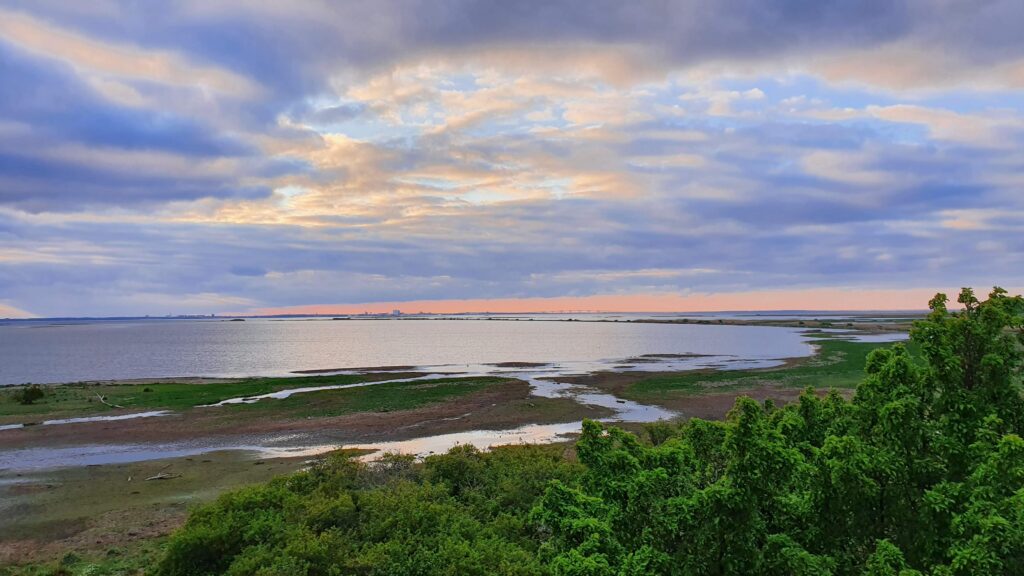
The following morning we chose to drive south as there were reports of various intriguing birds. Therefore, we first visited Beijershamn for the second time on Tuesday morning before our travel back home to Denmark. We drank the morning coffee in Cama Coche because of a light rain shower. But the rain didn’t bother the birds – nor did it bother the male Collared Flycatcher, who was staying at the parking lot.
It was dry weather and while the clearing was on its way we went for a nice walk along paths and boardwalks and watched birds in the area. After a few hours, we were at 55 bird species, including White-tailed Eagle, Bearded Reedling, Little Tern, and various waders and ducks.

More visitors, birders and bikers – a corona effect?
Well, as mentioned in the beginning, it was a long time since we were last on Öland and things change over time. But something was markedly different this time – the number of people!
Öland is visited every year by thousands of tourists, who especially flock to the island in the summer. This year, our trip coincided with Pentecost, Sweden’s National Day, and good weather, but that was not the first time. Okay, there was a big biker event and Saturday there were a lot of motorcycles on the narrow roads and you noticed them. But there were also more motorhomes, “ordinary” one-day tourists – and even birdwatchers were in larger numbers than before.
Was it just because of the long weekend or was it due to the high prices of fuel and flight tickets? Maybe you now really are beginning to feel the growing interest in getting out into nature? Or was it an effect of the corona pandemic?
Maybe it was just a coincidence of events? But luckily it was still really nice in Öland.

All photos and video © Bente Steffensen & Uffe Damm Andersen unless otherwise stated.

